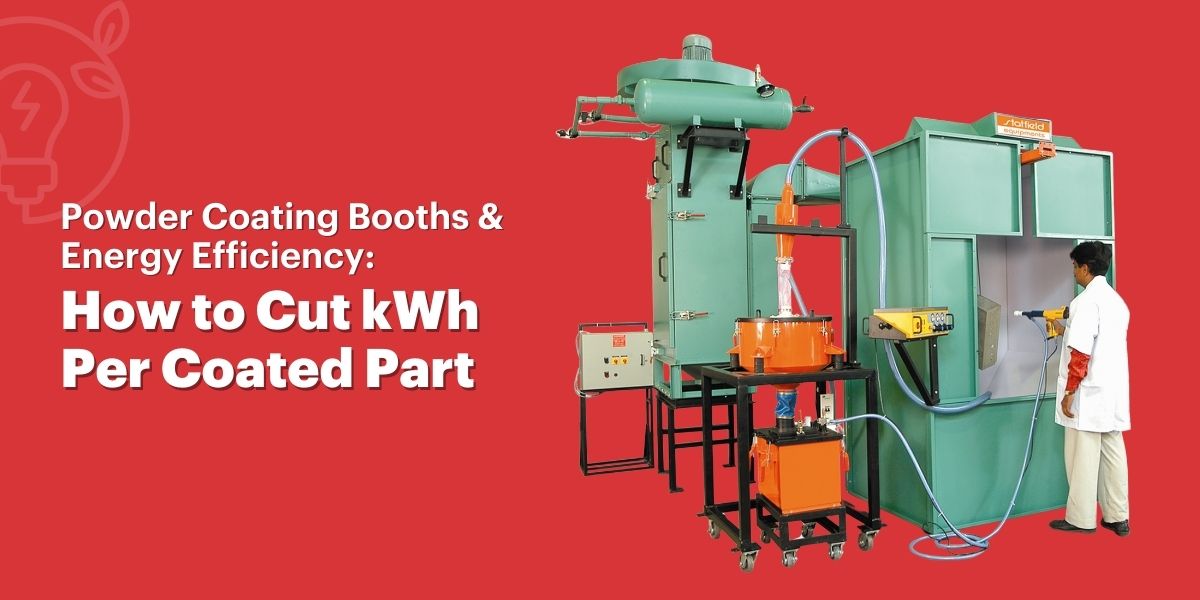Why energy efficiency matters (and the KPI to watch)
In most coating shops, booths and ovens drive a big chunk of the utility bill. But monthly kWh alone won’t tell you much. The KPI that exposes real improvement is kWh per coated part. Lowering that number without hurting quality directly improves your cost/part and ROI.
This article focuses on three booth-level levers that move the needle fast:
- VFDs on fans
- Right-sized purge/exhaust
- Heat-recovery on exhaust vs make-up air
VFDs on booth fans: control speed, slash power
A fan’s power draw follows the cube law: if you reduce speed by 20%, power drops to 0.8³ = 0.512 (≈49% less). That’s why VFDs are the first place to look.
What good looks like Maintain a stable booth differential pressure (DP) setpoint with a VFD loop, not a fixed damper.
Use lower standby speeds during idle, ramp up only for spray and purge.
Pair with balanced make-up air (MUA) so you don’t “fight” the booth with negative building pressure.
Right-sized purge & exhaust: capture what you need no more
Many powder coating booths pull more air than necessary. Over-exhausting wastes kWh, lifts powder off parts, and strains MUA. The goal is enough capture for overspray containment and operator safety not maximum draw.
What good looks like
- Confirm the required CFM for your opening size/geometry and keep it there.
- Use timed purge profiles for color change: short, high-flow bursts to clear panels/ducts, then return to setpoint (don’t run at “purge” all shift).
- Keep booth DP in a narrow band; alarms only if you drift.
- Verify MUA temperature & balance so the booth isn’t starved or over-pressured.
Heat-recovery: use your exhaust to preheat make-up air
Your powder coating booths (and ovens) throw away hot air. A sensible-heat recovery system can preheat incoming MUA and cut heater load dramatically.
Options (pick what your codes allow)
- Run-around coil (closed-loop water/glycol) between hot exhaust and MUA no cross-contamination.
- Plate heat exchangers (sensible only) where permitted
- Energy-recovery wheel (sensible) in non-hazardous, non-contaminating streams.
- Direct recirculation is sometimes allowed with high-efficiency filtration and strict limits follow code and consult your safety authority.
We design booths to hit a stable DP band, integrate VFD logic with purge profiles, balance MUA and where allowed add sensible heat-recovery. The result is lower kWh/part with no compromise on finish quality.
FAQs
Not if you hold DP/CFM at the right setpoint. You’re removing excess not required flow.
Typically yes with VFD-rated Ex motors and drives sized/installed per code. Get your OEM and EHS approvals.
Sometimes, under strict filtration and safety limits. Many jurisdictions restrict this confirm with your local code (NFPA/ATEX/OSHA equivalents).
VFD + right-sized purge often pays back in months; heat-recovery can be months to ~2 years depending on climate and hours.


